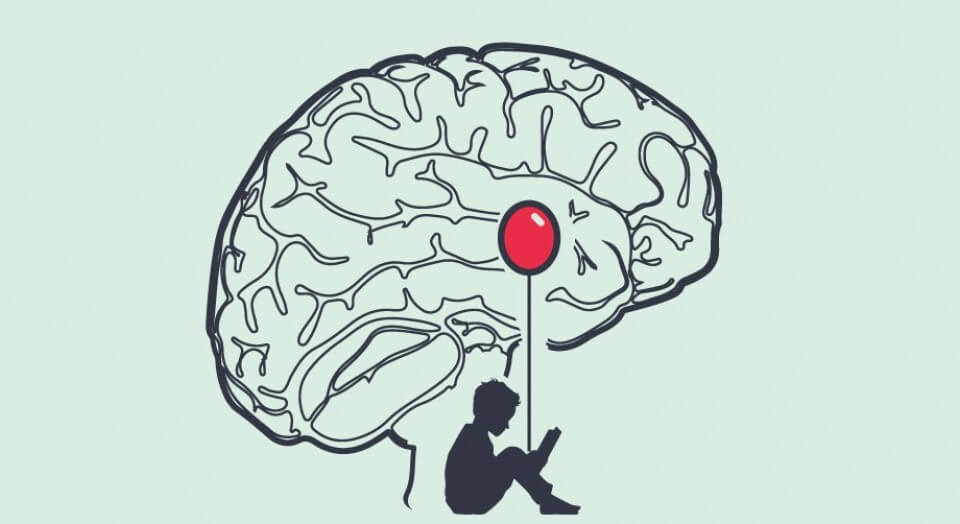The Anatomy of Fear: Physiological and Psychological Origins


Written and verified by the psychologist Valeria Sabater
Thomas Hobbes said that when he was born, his mother gave birth to twins: himself and his own fear. Few emotions define us as much as fear, which is stubborn and recurrent. Not only does it guarantee our survival, but it also ruins many opportunities, like a ravenous enemy of freedom and personal growth.
Fear can be uncomfortable and paralyzing. But eliminating it completely from your life would be like leaving all your doors and windows open, or walking barefoot along a sharp and rocky road. It would be a senseless risk to take that would directly affect your balance and survival.
Brave and daring people don’t erase fear from their minds. It’s always there, they just know how to manage it and use it to their advantage.
“I count him braver who overcomes his desires than him who conquers his enemies; for the hardest victory is over self.”
-Aristotle-
Alfred Hitchcock said that nothing is as pleasurable as controlled fear. Some people go to the movies just to experience fear, anxiety, and terror. However, doing this in a safe environment and being able to leave unscathed, relaxed, and in the company of partners and friends results in a stimulating kind of pleasure.
It isn’t crazy to say that fear is necessary and healthy. This primitive emotion is beneficial to human beings, as long as we maintain a certain degree of control over it. But as soon as it takes control and triggers a succession of chemical storms and physiological changes in the body, everything goes haywire.
Fear turns into paralyzing stress, panic attacks, and an emotional takeover that allows complex yet interesting processes to occur.

Physiological basis of fear: the amygdala
Elena suffered from a car accident 6 months ago as she was taking her young daughter to school. Both were unharmed, but the memory and psychological impact of the incident clings to her mind like an open wound. It’s seriously affecting her quality of life.
Even the sound of her water bottle falling off the nightstand can wake her up, startled and full of panic. It reminds her of the sound of another car hitting hers. Today, Elena still can’t drive her car. Even just sitting in the driver’s seat and putting her hands on the steering wheel makes her heart race, she feels nauseous, and the world spins around her.
When you read this story, common among people who have been in a car accident, you’re probably thinking that Elena should seek help sooner or later. However, to understand the origin of panic, phobias, and everyday fears, you have to dig a little deeper and look at the brain’s anatomy.

The most ancient part of the brain
All the information that comes in through the five senses passes through the amygdala. This is a tiny structure of the limbic system. It is also the most ancient part of the brain, dominated entirely by our emotions. The amygdala “monitors” everything that happens within and around us. The second it detects a possible threat, it activates a bunch of different neural pathways to create a kaleidoscope of complex reactions.
The amygdala has the bad habit of not focusing on the details – there’s not enough time when it comes to guaranteeing our survival. Therefore, it often leads us to react irrationally to non-threatening stimuli.
The amygdala’s alert system immediately activates the nervous system to prepare the body for fight or flight in the following ways:
- It raises blood pressure, speeds up cellular metabolism, increases the amount of glucose in the blood, makes blood clotting easier, and even increases mental activity.
- Most of the blood is directed to the body’s large muscles, like the legs, to give them enough energy to escape if necessary.
- Adrenaline courses through the body, causing the immune system to slow down because the brain does not consider it essential to the task at hand. All that’s necessary in that moment is to be able to fight or run away.
This succession of physiological and chemical alterations can help you escape real danger. But in the case of Elena, the fear is psychological and intangible. She associates any sudden noise with the memory of her accident, triggering a panicked response. It’s easy to see how exhausting it can be to live this way for months or years.
The psychology of fear and the importance of learning how to manage it
Pathological fear is one of the most exhausting things a human can experience. It’s a huge part of generalized anxiety disorder, phobias, hypochondria, and even OCD. It comes in many different shades and completely removes the person’s control, quality of life, and dignity.
You might even say that the most common fears in today’s society are the ones that live in the mind. They’re not a response to external threats; rather, they’re inner shadows that are so hard to shake, even though doing so is vital for a healthy existence.
We invite you to reflect on some simple strategies to manage these fears.

5 tips to manage your fears
- Identify them, give them a name. Don’t let them be silent or secret.
- Declare war on them. Notice how they’ve invaded your privacy and take action against them to regain control.
- Get to know them and understand where they came from. Remember that fear is a response to both internal and external factors. Sometimes the source is within you, and others there’s something in your environment that’s making you uncomfortable, uneasy, and scared.
- Stop feeding into them. Understand that if you keep giving them more power, they’ll end up taking over your life completely. Try to rationalize them and use every resource at your disposal to minimize their effects, whether it’s deep breathing, exercising, or distracting yourself. All of these things will reduce your anxiety.
- Talk to yourself as if you were your own personal trainer. Design strategies to eliminate limiting behaviors from your life. Motivate yourself to conquer small, everyday tasks; congratulate yourself when you achieve them; and remember that this will be a constant work in progress.
Fear is a complex and broad subject. It’s incredibly helpful to learn how to take better care of yourself, because if you want to achieve true happiness, first you have to climb the fence of fear.
Bibliography
André, Cristoph (2010). Psychology of Fear: Worry, Anxiety, and Phobias. Editorial Kairos.
Hütler, Gerald (2001). Biology of Fear: How Stress turns into Emotions. Plataforma Editorial.
Gower, L. Paul (2005). Psychology of fear. Nova Biomedical Books
Thomas Hobbes said that when he was born, his mother gave birth to twins: himself and his own fear. Few emotions define us as much as fear, which is stubborn and recurrent. Not only does it guarantee our survival, but it also ruins many opportunities, like a ravenous enemy of freedom and personal growth.
Fear can be uncomfortable and paralyzing. But eliminating it completely from your life would be like leaving all your doors and windows open, or walking barefoot along a sharp and rocky road. It would be a senseless risk to take that would directly affect your balance and survival.
Brave and daring people don’t erase fear from their minds. It’s always there, they just know how to manage it and use it to their advantage.
“I count him braver who overcomes his desires than him who conquers his enemies; for the hardest victory is over self.”
-Aristotle-
Alfred Hitchcock said that nothing is as pleasurable as controlled fear. Some people go to the movies just to experience fear, anxiety, and terror. However, doing this in a safe environment and being able to leave unscathed, relaxed, and in the company of partners and friends results in a stimulating kind of pleasure.
It isn’t crazy to say that fear is necessary and healthy. This primitive emotion is beneficial to human beings, as long as we maintain a certain degree of control over it. But as soon as it takes control and triggers a succession of chemical storms and physiological changes in the body, everything goes haywire.
Fear turns into paralyzing stress, panic attacks, and an emotional takeover that allows complex yet interesting processes to occur.

Physiological basis of fear: the amygdala
Elena suffered from a car accident 6 months ago as she was taking her young daughter to school. Both were unharmed, but the memory and psychological impact of the incident clings to her mind like an open wound. It’s seriously affecting her quality of life.
Even the sound of her water bottle falling off the nightstand can wake her up, startled and full of panic. It reminds her of the sound of another car hitting hers. Today, Elena still can’t drive her car. Even just sitting in the driver’s seat and putting her hands on the steering wheel makes her heart race, she feels nauseous, and the world spins around her.
When you read this story, common among people who have been in a car accident, you’re probably thinking that Elena should seek help sooner or later. However, to understand the origin of panic, phobias, and everyday fears, you have to dig a little deeper and look at the brain’s anatomy.

The most ancient part of the brain
All the information that comes in through the five senses passes through the amygdala. This is a tiny structure of the limbic system. It is also the most ancient part of the brain, dominated entirely by our emotions. The amygdala “monitors” everything that happens within and around us. The second it detects a possible threat, it activates a bunch of different neural pathways to create a kaleidoscope of complex reactions.
The amygdala has the bad habit of not focusing on the details – there’s not enough time when it comes to guaranteeing our survival. Therefore, it often leads us to react irrationally to non-threatening stimuli.
The amygdala’s alert system immediately activates the nervous system to prepare the body for fight or flight in the following ways:
- It raises blood pressure, speeds up cellular metabolism, increases the amount of glucose in the blood, makes blood clotting easier, and even increases mental activity.
- Most of the blood is directed to the body’s large muscles, like the legs, to give them enough energy to escape if necessary.
- Adrenaline courses through the body, causing the immune system to slow down because the brain does not consider it essential to the task at hand. All that’s necessary in that moment is to be able to fight or run away.
This succession of physiological and chemical alterations can help you escape real danger. But in the case of Elena, the fear is psychological and intangible. She associates any sudden noise with the memory of her accident, triggering a panicked response. It’s easy to see how exhausting it can be to live this way for months or years.
The psychology of fear and the importance of learning how to manage it
Pathological fear is one of the most exhausting things a human can experience. It’s a huge part of generalized anxiety disorder, phobias, hypochondria, and even OCD. It comes in many different shades and completely removes the person’s control, quality of life, and dignity.
You might even say that the most common fears in today’s society are the ones that live in the mind. They’re not a response to external threats; rather, they’re inner shadows that are so hard to shake, even though doing so is vital for a healthy existence.
We invite you to reflect on some simple strategies to manage these fears.

5 tips to manage your fears
- Identify them, give them a name. Don’t let them be silent or secret.
- Declare war on them. Notice how they’ve invaded your privacy and take action against them to regain control.
- Get to know them and understand where they came from. Remember that fear is a response to both internal and external factors. Sometimes the source is within you, and others there’s something in your environment that’s making you uncomfortable, uneasy, and scared.
- Stop feeding into them. Understand that if you keep giving them more power, they’ll end up taking over your life completely. Try to rationalize them and use every resource at your disposal to minimize their effects, whether it’s deep breathing, exercising, or distracting yourself. All of these things will reduce your anxiety.
- Talk to yourself as if you were your own personal trainer. Design strategies to eliminate limiting behaviors from your life. Motivate yourself to conquer small, everyday tasks; congratulate yourself when you achieve them; and remember that this will be a constant work in progress.
Fear is a complex and broad subject. It’s incredibly helpful to learn how to take better care of yourself, because if you want to achieve true happiness, first you have to climb the fence of fear.
Bibliography
André, Cristoph (2010). Psychology of Fear: Worry, Anxiety, and Phobias. Editorial Kairos.
Hütler, Gerald (2001). Biology of Fear: How Stress turns into Emotions. Plataforma Editorial.
Gower, L. Paul (2005). Psychology of fear. Nova Biomedical Books
This text is provided for informational purposes only and does not replace consultation with a professional. If in doubt, consult your specialist.







